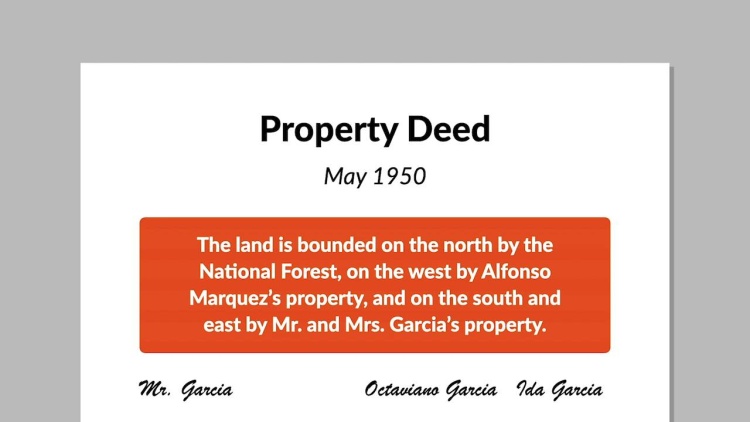Romero v. Garcia
New Mexico Supreme Court
546 P.2d 66 (1976)

- Written by Sean Carroll, JD
Facts
Antonio Garcia and his wife (defendants) owned a tract of land in New Mexico. The Garcias sold thirteen acres of that land to their son, Octaviano, and his wife, Ida Garcia Romero (plaintiff) in 1947. The deed, in Spanish, described the property as being bounded by National Forest on the north, Antonio Garcia’s property on the east and south, and Alfonso Marquez’s property on west. The northern and western boundaries were delineated by fences that had been there for more than fifty years. Mrs. Garcia did not sign the conveyance, as required by New Mexico community property laws. Romero and her husband immediately took possession of the property and built a home with assistance from the Garcias. Romero lived on the property until Octaviano’s death in 1962. Romero then moved out of state and remarried. Romero fell behind on tax payments on the property on multiple occasions, but always paid before a tax deed was issued to the state. Romero filed a lawsuit against the Garcias to quiet title to the property, claiming she had acquired title by adverse possession based on color of title and payment of taxes. The trial court found for Romero. The Garcias appealed to the New Mexico Supreme Court, arguing (1) that Romero did not have color of title to the land based on the void deed, (2) that the description of the property in the deed was inadequate for purposes of adverse possession, and (3) that Romero had failed to continuously pay taxes on the property.
Rule of Law
Issue
Holding and Reasoning (Sosa, J.)
What to do next…
Here's why 899,000 law students have relied on our case briefs:
- Written by law professors and practitioners, not other law students. 47,000 briefs, keyed to 994 casebooks. Top-notch customer support.
- The right amount of information, includes the facts, issues, rule of law, holding and reasoning, and any concurrences and dissents.
- Access in your classes, works on your mobile and tablet. Massive library of related video lessons and high quality multiple-choice questions.
- Easy to use, uniform format for every case brief. Written in plain English, not in legalese. Our briefs summarize and simplify; they don’t just repeat the court’s language.





